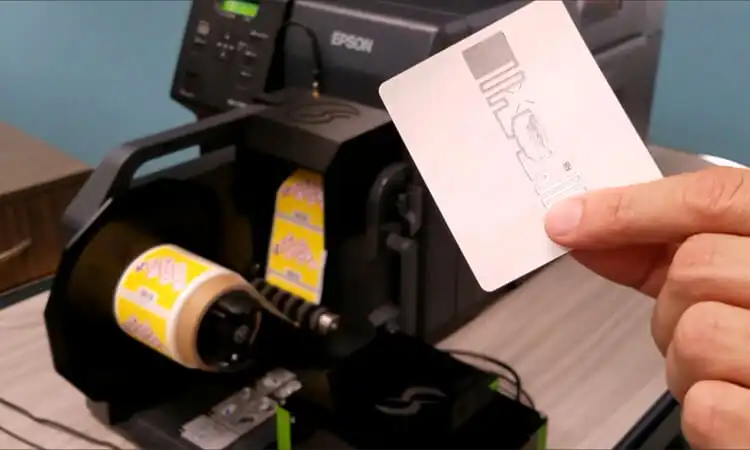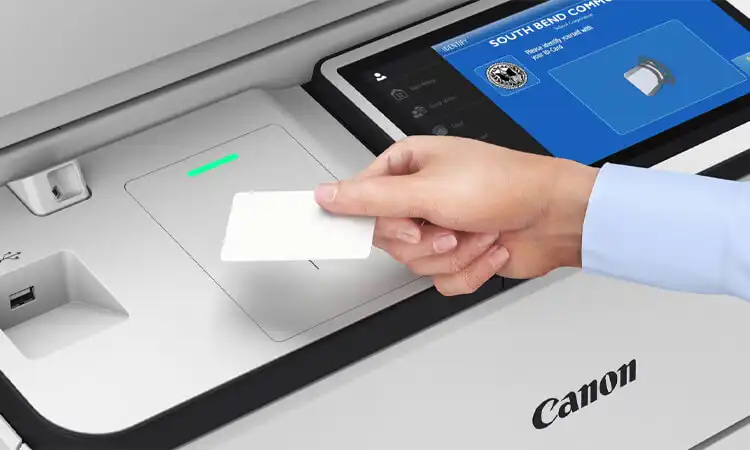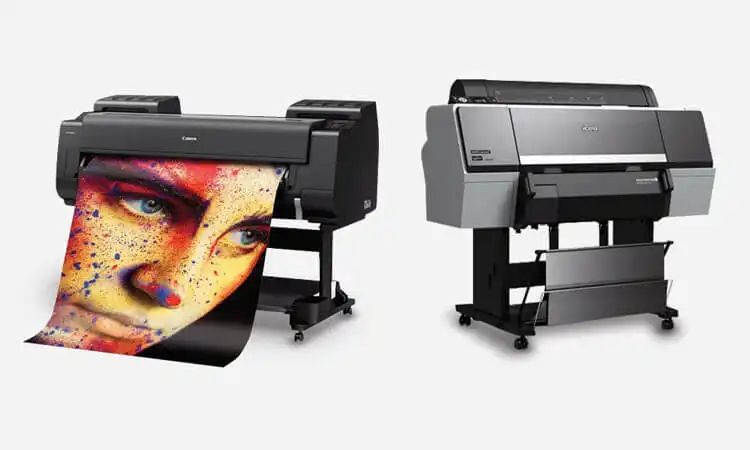If you’re looking for a printer that can handle RFID inkjet printing, you might wonder which brand to choose between Epson and Canon. Both companies are well-known for producing high-quality printers designed for various printing needs. This article will compare the advantages and disadvantages of Epson and Canon printers for RFID inkjet printing. By the end of this article, you’ll better understand which brand is the best fit for your printing needs.
Epson Printers for RFID Inkjet Printing
Epson is a well-known brand in the printing industry, and they offer a range of printers suitable for RFID inkjet printing. Epson’s SureColor P6000 and P8000 are two of their most popular models for this type of printing. These printers use UltraChrome HD ink, known for its excellent color accuracy and durability. Epson printers are also known for their high-quality output and reliability.

Canon Printers for RFID Inkjet Printing
Canon is a popular brand for RFID inkjet printing, offering high-quality printers with advanced features. Their imagePROGRAF PRO-1000 and PRO-2000 series printers use Lucia Pro ink, known for its high color accuracy and vibrancy. With Canon printers, you can expect reliable performance, ease of use, and exceptional print quality, making them an excellent choice for busy workplaces. Whether you need to print high-quality images or documents, Canon printers can easily handle the job.

Epson vs Canon: What is the Difference between Epson ink and Canon ink?
Epson and Canon are two popular printer manufacturers that produce high-quality ink cartridges. Epson ink is known for its longevity and fine details, while Canon ink is known for its high color accuracy and vibrancy.
Epson uses a unique ink formulation called UltraChrome. There includes multiple levels of black ink and is resistant to fading and smudging. Epson ink cartridges are also designed to work with their printers’ MicroPiezo print head technology. This design lets they can produce fine details and accurate colors.
On the other hand, canon uses a pigment-based ink called Lucia. This ink produces sharp, vivid images that are resistant to fading and water damage. Canon’s ink cartridges are also designed to work with their printers’ FINE (Full-photolithography Inkjet Nozzle Engineering) print head technology, which produces high-quality images with precise details.
Which Printer is Best for RFID Inkjet Printing?
There’s no one-size-fits-all answer when choosing between Epson and Canon printers for RFID inkjet printing. The best printer for your needs will depend on your specific printing requirements, budget, and preferences. Here are a few things to keep in mind when choosing between Epson and Canon:
- Consider your budget for upfront costs and long-term maintenance.
- Think about the level of color accuracy and vibrancy you require.
- Evaluate the ease of use and reliability of each brand’s printers.
- Consider the availability and quality of third-party ink cartridges for each brand.
Epson printers use UltraChrome HD ink, while Canon printers use Lucia Pro ink. Both types of ink are known for their excellent color accuracy and durability.
In terms of print quality, Epson is known for its superior color accuracy, while Canon also offers high-quality output. However, Epson printers tend to be more expensive than Canon printers, but they also offer more advanced features.
If you are looking for the best color accuracy and are willing to pay a premium price, Epson may be your best option. If you want a more affordable option that still offers high-quality output, Canon may be the way to go.
How To Print RFID Inkjet White Card By Printer Epson/Cannon
Printing RFID inkjet white cards using an Epson or Canon printer requires specific steps to ensure the best results. First, connect your printer to your computer and transfer your images to your computer. Next, choose a tray suitable for PVC cards and adjust the printer settings to the appropriate resolution and cardstock type. Finally, click the Print button to print your RFID inkjet white card.
However, not all Epson or Canon printers can print RFID inkjet white cards. Before starting the printing process, check your printer’s specifications to ensure that it is compatible with PVC cards and can print at the desired resolution. Additionally, it would be best to use an inkjet printable PVC card suitable for your printer to achieve optimal results.
Here is a video tutorial on how to print RFID inkjet white cards using an Epson/canon printer:
Notes for RFID Inkjet Printing
Regardless of which brand you choose, there are a few essential things to keep in mind when using RFID inkjet printing:
- Use the right type of RFID inkjet paper to ensure your prints are clear and accurate.
- Calibrate your printer regularly to ensure it produces the most accurate colors possible.
- Store your ink cartridges in a cool, dry place to help prolong their lifespan.
- Experiment with different ink and paper combinations to find the best results for your specific needs.
In conclusion, Epson vs Canon are both reputable brands that offer excellent options for RFID inkjet printing. Each brands have unique features between them to meet different printing requirements, so take the time to carefully evaluate your options. By doing so, you can find the best printer for your needs and create high-quality RFID inkjet prints for your business.
Related Articles: Inside RFID Labels: Structure Revealed








